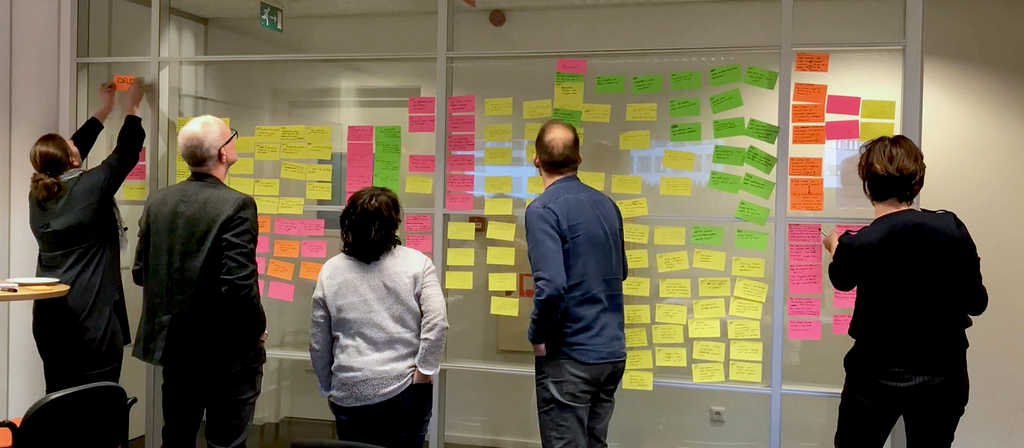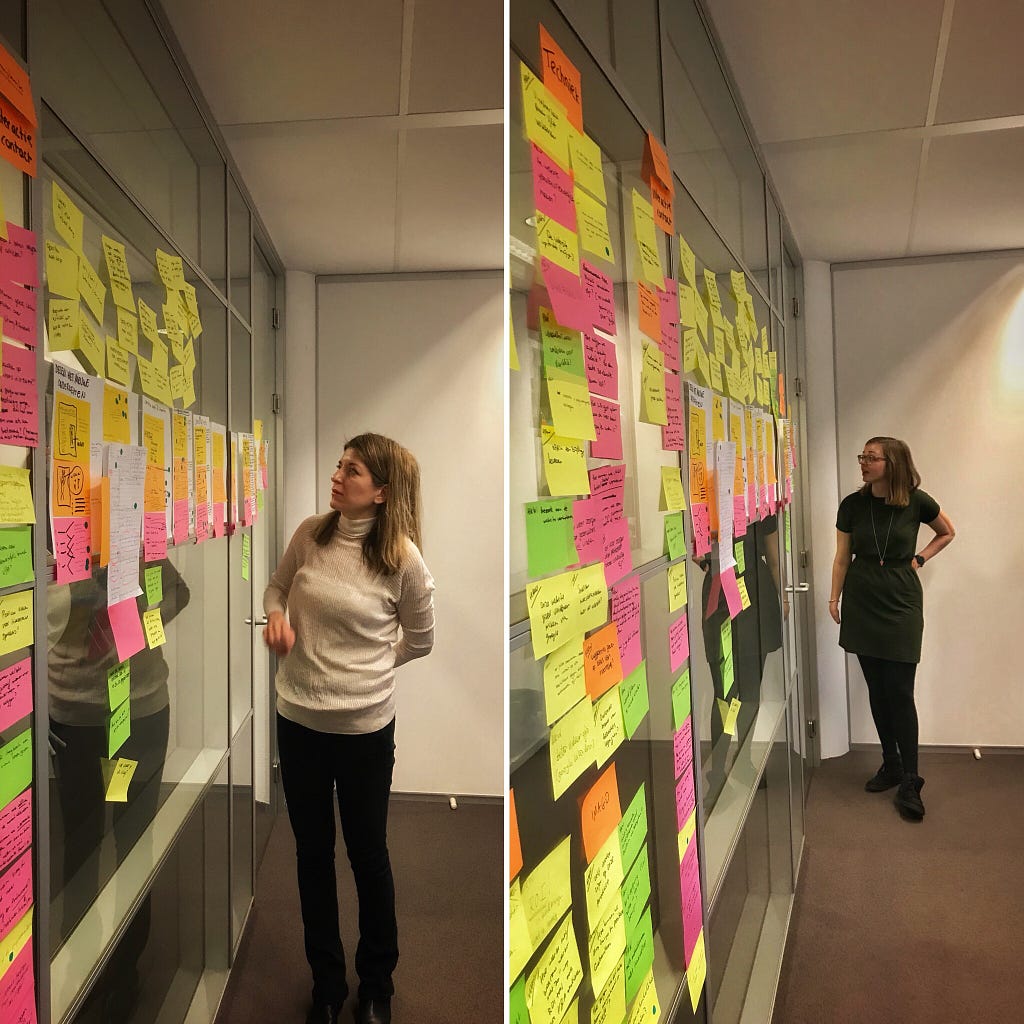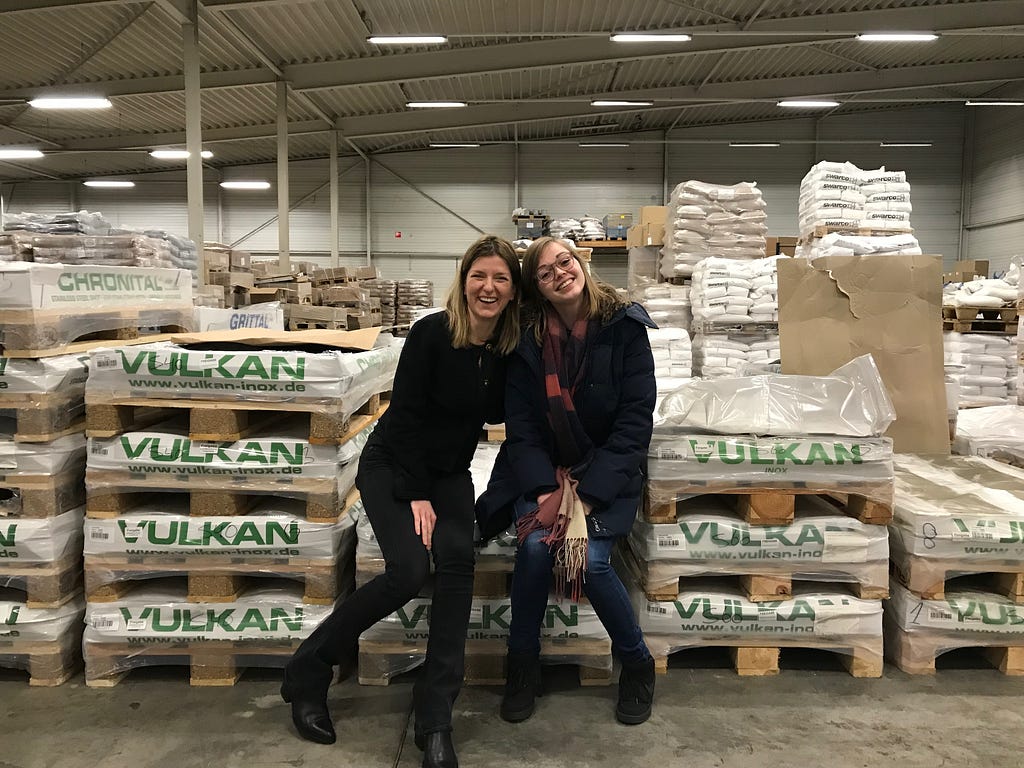Innovation in content

How a design sprint helped a publisher reinvent their editorial team
This is a story about a GV style design sprint. If you’ve never heard of that, you can learn more here or read the book.
A Dutch newspaper publisher, targeting entrepreneurs in the manufacturing industry, contacted Angi Studio as they were looking for opportunities to innovate and experiment with their website. What followed was a design sprint that started out as an experiment for a new website and ended up in something much more valuable.
Angi Studio is a digital design agency based in The Hague, The Netherlands. Two of our Product Designers joined their team and supported them by facilitating the sprint process and creating a high-fidelity prototype that we user tested.

Getting the manufacturing industry to talk
During the sprint we discovered the manufacturing industry is a very ‘closed industry’. They don’t like to talk about their experiences with each other, especially not when those experiences are negative. But those experiences we think would be the most interesting to hear/read about. These are the kind of stories you could learn a lot from, which was also confirmed by our target audience.
The expert interviews gave us a lot more focus for the sprint. Besides creating a new platform that would help the manufacturing industry move forward we extended the long-term goal with ‘How Might We’s’ (HMW) like:
› HMW ‘seduce’ companies to share their experiences?
› HWM make sure the industry shares their real stories?
Hardcore sprint team 💪
For this sprint almost the entire editorial team of 6 editors joined us for the full five days! Which was a huge commitment for them. A sprint in itself is already very intense, I can’t imagine how they must have felt at the end of the week combining the sprint with writing and publishing articles for their website and newspaper.

Experimenting with different types of content
The team we worked with was an editorial team that is used to a ‘high efficiency’ environment as they call it. They are constantly in ‘production mode’, producing new content for their website and newspaper every day. Because of that, the team has developed a culture valuing production over experimentation. They did however feel like they should innovate.
At the beginning of the week expectations from the team were that they would be sketching new templates for the website, but after the four-step sketch our art museum was filled with cool new content types to try out!
Everybody on board for prototyping day ⛵️
The whole concept was very content driven, so we needed the full sprint team to help us out on Thursday. We created a to-do list based on out storyboard and sent the whole team editorial team off to create brand new newsletters, articles, blog posts and more. Who knew these editors could write that fast! We could hardly keep up with with them.
Stay as close to a real experience as possible. Don’t demo your new concept.
One of the test goals was to figure out if there was a way to seduce users to share their stories online. Instead of asking users if they would be up for it, we showed them what these stories might look like. As a starting point for the test we used an e-mail environment with the publishers newsletter, since this is the biggest source of traffic for the current website. We wanted to stay as close to the ‘real’ experience as possible, to get a real reaction instead of forced feedback when we would have ‘presented’ it to the users .After starting out with something familiar the users could freely navigate through the new prototype website filled with 100% new content.
For the prototype we like to keep things simple. Since we had to incorporate a lot of content pages in our prototype we used InVision combined with Craft (to quickly sync from Sketch to InVision).
What did we learn from the test?
The test definitely brought the editors closer to their readers. It was the first time they witnessed readers going through their articles and respond to them in a very direct and honest way 😬. For some it was quite an emotional experience. They learned what readers liked and didn’t like about the new content. Even when reactions were negative we learned why and immediately got new ideas on how to improve.
“Wow, this is something new! It’s definitely much more inviting to read.”
Overall, the user test on Friday turned out really positive for the team. Besides learning more about their readers, the team got ‘permission’ from the readers for their new proposition. It confirmed they were on the right track with the new content types.

You don’t need a new website to start experimenting
A couple of weeks after testing we got a very enthusiastic phone call from the Project Manager who initiated the sprint. She told us the sprint had opened their eyes and the whole editorial team got a boost! 🚀 They were already experimenting with rewriting their newsletters, initiating different kind of articles and they even started their own podcast! Something they never did before or maybe never dared to. For this reason, they decided to postpone the new website, instead focusing more on the content.
Sometimes teams can get gridlocked in their way of thinking, making innovation impossible.
Sometimes innovation can be in small things. It doesn’t always have to be a new product or crazy new website. For our client the most important takeaway from the sprint is that they didn’t need this new website to start experimenting with new content types. The design sprint opened their eyes. Sometimes teams can get gridlocked in their way of thinking, making innovation impossible. A Design Sprint helped our client out of their comfort zone and start reinventing their content and themselves.
Esther Wieringa is a Product Designer & Design Sprint facilitator at Angi Studio. Want to know more about Design Sprints, Research sprints, Product Design or Front-end Development? Follow us on Instagram for daily updates.
Innovation in content was originally published in Sprint Stories on Medium, where people are continuing the conversation by highlighting and responding to this story.
